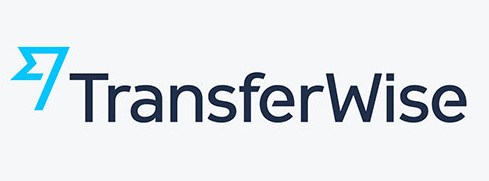TransferWise: Quicker and cheaper foreign exchange

By creating a market for people with opposite currency requirements and leveraging an ‘all-digital’ approach, TransferWise is seeking to displace banks and create considerable savings for retail consumers in the foreign exchange market
Introduction to TransferWise
Until now, consumers have been forced to accept an unfortunate reality: when they wanted to exchange currency or send money abroad, their bank was going to give them a rate 200 basis points below market and probably also slap them with a fixed fee – just for good measure. Luckily, times are changing. A stream of hungry startups – such as TransferWise – are leveraging innovative business models and low cost bases to launch an assault on the market.
TransferWise demonstrates the power of a closely aligned business and operating model – providing customers with substantially lower rates and fees as well as quicker transactions. The proof lies in its rapid growth – since launching in the United States in February, the platform has already transacted more than $1 billion from its US business. With a global transfer market estimated to around $5-10 trillion dollars, they well positioned for rapid growth.
Business model
TransferWise allows customers to transfer money internationally by matching customers with complimentary money conversion needs. For example, for every customer in the US that is transferring money to the UK, TransferWise is able to find customers in the UK that are transferring money to the US. Unlike a standard bank, which has one price for sellers of a currency and one for buyers and takes the spread, TransferWise offers customers the current mid-market rate and then applies a small fee. The fee varies depending on the currency, but is typically in the range of 30-40 basis points. On average, the fee is 8-10 times lower than the total cost imposed by standard banks.
This business model allows TransferWise to create value for customers by essentially creating a two-sided market of currency exchange. By not actually needing to purchase currency, TransferWise is able to charge substantially lower fees, and complete transactions rapidly – with one-third of the transactions across the Atlantic occurring instantly. [i]

Operating model
The crux of TransferWise’s operating model is facilitating the low-cost market of currency exchange. This has involved establishing a number of very targeted processes:
- Pooling of funds: Rather than individually pair customers, by operating at scale, TransferWise essentially creates pools of currency in the countries that it operates in. TransferWise establishes a central account/pool of capital in each country. Customers transfer money into the TransferWise’s account in one country, and are then paid in the new currency from TransferWise’s corresponding account in the second country.
- Matching markets: TransferWise only operates in a finite number of countries where it can effectively balance the aggregate inflows and outflows. Where there are temporary gaps, TransferWise goes to the wholesale market to plug them – although its profitability relies on keeping this amount to a minimum.
- Completely digital architecture: TransferWise is a completely digital business – with all customer interaction occurring online or through a call support center. It partnered with ACI, a leading global electronic payments provider, to give it a leading-edge solution allowing for all payments types, channels, currency or network [ii]
- Labor: The company has grown to a staff of 450 globally. Additional staff were geared towards business development (expanding the number of countries and currency pairings) and continuing to improve payment processing to make it as quick as possible.
Creating a distinctive offering
TransferWise provides an example of enhancing value creation for customers by aligning their business and operating model. The company seeks to create value for customers who want to maximize efficiency when transferring money overseas – both in terms of fees paid and the speed by which the money is transferred. Almost all aspects of their business model are geared towards delivering this. The focus on being completely digital keeps the organization lean and facilitates low costs. The pooling of capital in different markets likewise means that TransferWise minimizes the amount of currency purchasing it actually needs to undertake – also reducing any fees paid to other institutions. Since TransferWise doesn’t actually transfer money internationally, it is able to complete transactions much quicker than many standard banks, if not instantly.
There are some downsides of this model compared to standard banks. The need for pooling funds potentially limits the number of currency pairings that TransferWise will ultimately offer, and presents problems when there are currencies without balanced supply and demand. The lean nature also means less comprehensive customer support, if desired by some customers. However, for the most part, it’s operating fuel its competitive advantage over traditional institutions.
Sources
[ii] http://www.businesswire.com/news/home/20151208005845/en/ACI%E2%80%99s-Framework-Power-TransferWise-Global-Network
[iii] http://www.paymentscardsandmobile.com/5-6-trillion-sme-international-money-transfer-market/
[iv] https://transferwise.com/about
[v] https://www.cbinsights.com/blog/disrupting-western-union-moneygram/
[vi] http://www.economist.com/news/special-report/21650294-remittances-abroad-are-attracting-competition-sweet-and-low
[vii] http://www.bizjournals.com/tampabay/news/2015/11/12/virgin-paypal-execs-back-disruptive-fintech-firm.html




Wow. Really fascinating business and operating model. Trying to figure out what this happens in the long term… if they got to a billion in transactions in 9 months, how much further can this go? What are the implications for traditional currency markets?
Yeah, they have been expanding rapidly and don’t look to be slowly anytime soon. At a minimum, I think very shortly we are going to see the rates offered to retail customers by the big banks converge towards the mid-market rate. Foreign exchange has been a disproportionate contributor to the bottom line of banks – and I think this is largely because it’s simply gone unquestioned by consumers. People view foreign transactions as complicated and have just excepted high fees as the cost of doing business. I think Transferwise and a few other players are quickly dispelling that myth, and as a result we will see the entire industry get a lot more competitive!
Good post. Glad to see disruption occurring in many different finance verticals.
I didn’t realize that Transferwise created pools of currency in the countries that it operates in. Does this operational model have potential implications for the number of countries that Transferwise can operate in? Or is it already successfully operating in a wide range of countries across the world?